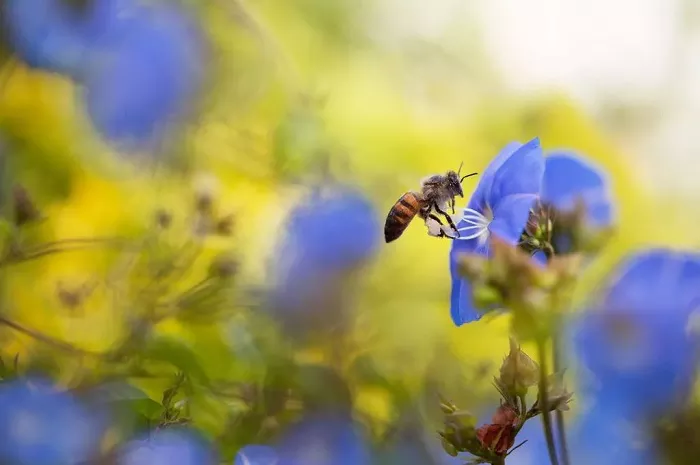With spring in full bloom and the promise of warm summer months ahead, many are turning their attention to their summer gardens. Following the iconic Chelsea Flower Show, garden enthusiasts are planning and preparing to fill their lawns with beautiful bouquets that add vibrant colors to their gardens during the sunnier seasons. However, it is crucial to consider the pollinators that these plants can attract. These creatures are essential for the survival of ecosystems and food production, so supporting them is of vital importance.
Pollination is essential for plant reproduction, biodiversity, and food production. Creating a productive environment for important insects like bees and butterflies is crucial for the surrounding wildlife. By planting flowers that attract these pollinators, you not only aid the health of ecosystems and human survival but also surround yourself with an array of beautiful colors and fragrances.
Gardening expert Fiona Jenkins at MyJobQuote.co.uk has compiled a list of the best pollinating plants to add to your garden, making it a sanctuary for bees, butterflies, and more. Here are some top recommendations:
Aster
Asters are beloved for their late-season bursts of color, adding vibrant hues to any garden. These daisy-like perennials, with their star-shaped flower heads, come in shades of white, blue, and purple. They look stunning in mixed flower beds or as standalone displays, creating a charming cottage vibe.
Asters bloom until the first frost, making them a top choice for attracting a variety of pollinating insects. Bees are particularly drawn to asters when they are in full bloom, as the flowers serve as an excellent source of nectar during late summer and early autumn, a time when most other plants have finished blooming.
You can purchase long-lasting purple asters from Gardening Express for £8.95 or check out the Aster dumosus Lady in Blue on Amazon for £14.95.
Foxglove
Foxgloves are a favorite among UK gardeners, boasting a striking spike of purple-pink blossoms from summer to early autumn. These plants can reach heights of up to 2 meters and are typically found on heathland and woodland fringes, adding a splash of color to any summer garden.
Foxgloves bloom from late spring to summer and can be easily cultivated from seed. Once established, they will self-seed in the shadier corners of your garden, providing a constant source of pollen and nectar for bees and other pollinators during the early summer months.
Dahlia ‘Stardust’
Dahlia ‘Stardust’ is a stunning small-flowered decorative variety, with soft pale pink petals beautifully bordered with vibrant magenta-pink. It blooms consistently from midsummer to the first frost, adding a sparkling touch to any planting scheme.
Plant dahlias in full sun in well-drained, fertile soil, and remove spent flowers to encourage more growth. Dahlias are ideal for creating stunning garden borders and are also popular as cut flowers. Their characteristic flowers, with a long spike of petals resembling honeycombs, attract bees, providing them with valuable pollen and nectar.
Other Top Pollinating Plants
Other plants that can elevate your garden’s aesthetic while benefiting the ecosystem include poppies, lavender, crocus, primroses, and marigolds. These plants not only add beauty to your garden but also support the health of local pollinator populations.
By incorporating these pollinator-friendly plants into your garden, you can contribute to the health of local ecosystems and enjoy the beauty and fragrance they bring.


